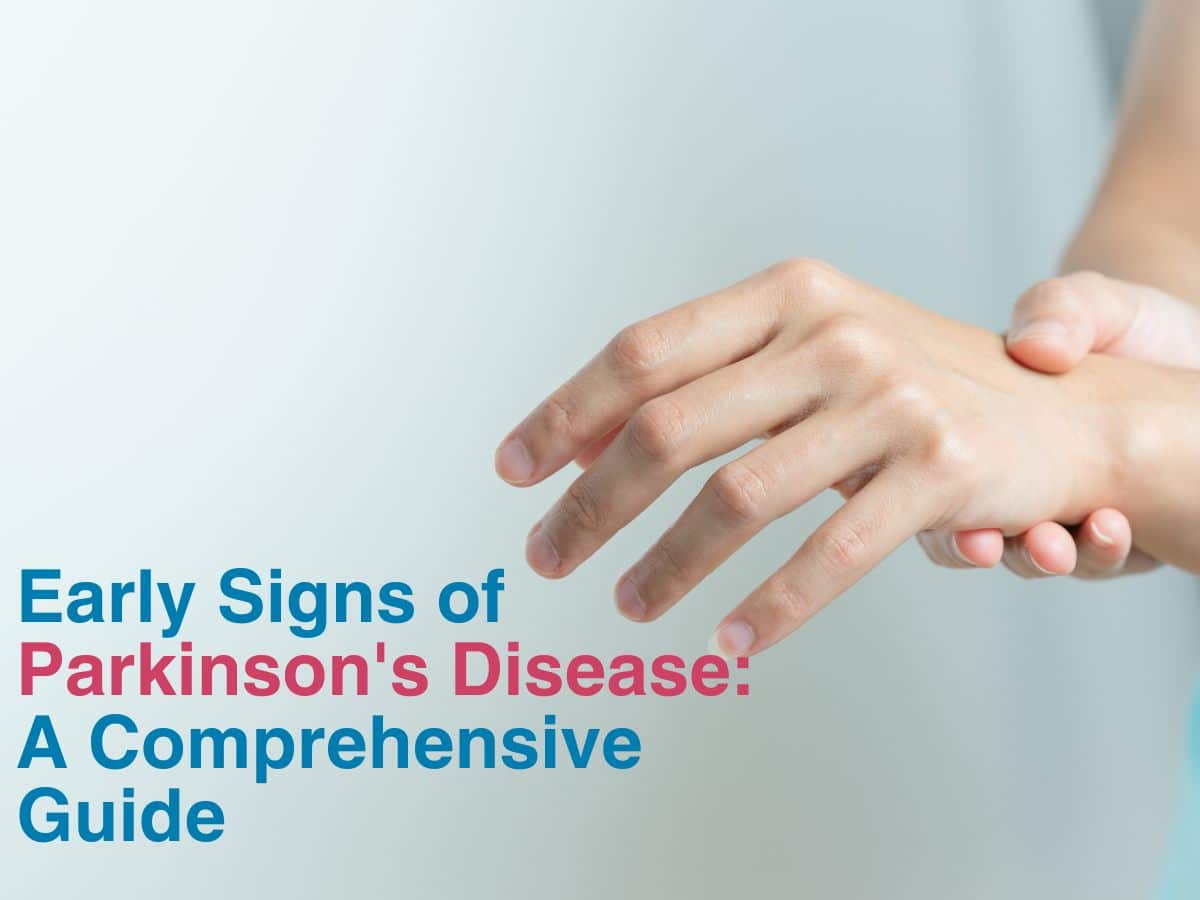
Early Signs of Parkinson’s Disease: A Comprehensive Guide

A Parkinson’s diagnosis can be very scary. Movies like Love and Other Drugs only begin to touch the symptoms and the agony that comes with a neurological disease like Parkinson’s!
But, while worrying won’t solve anything, early detection can most definitely help.
So, what is Parkinson’s?
Parkinson’s disease is a progressive neurological disorder that affects movement, balance, and coordination.
While it’s often associated with visible tremors, the early signs of Parkinson’s can be subtle and easily overlooked.
This comprehensive guide will explore the early symptoms of Parkinson’s disease, helping you recognize potential warning signs and understand when to seek medical attention.
Recognizing the Early Tremors in Parkinson’s Disease
One of the most well-known symptoms of Parkinson’s disease is tremor, but early tremors can be easily missed or dismissed.
Key points include:
- Resting tremor: Typically begins in one hand or foot
- “Pill-rolling” tremor: Characteristic motion between thumb and forefinger
- Asymmetry: Often starts on one side of the body
- Intermittent nature: May come and go, especially during stress or excitement
Early tremors are often mild and may not interfere with daily activities initially.
However, they can be an important indicator of developing Parkinson’s disease.
Changes in Handwriting as a Sign of Parkinson’s
Micrographia, or small, cramped handwriting, is a lesser-known but significant early sign of Parkinson’s. Look for:
- Progressively smaller handwriting
- Letters becoming more crowded together
- Difficulty maintaining consistent letter size
- Slower writing speed
These changes result from the combination of tremor and muscle rigidity associated with Parkinson’s. If you notice your handwriting becoming consistently smaller or more difficult to read, it may be worth discussing with a healthcare professional.
Loss of Smell: An Early Indicator of Parkinson’s
Olfactory dysfunction, or a decreased sense of smell, can occur years before motor symptoms appear.
Key aspects include:
- Gradual loss of smell ability
- Difficulty identifying specific odors
- May be one of the earliest detectable signs
- Often overlooked or attributed to aging
While not everyone with a reduced sense of smell will develop Parkinson’s, it’s a symptom that warrants attention, especially when combined with other potential signs.
Sleep Disturbances and Their Link to Parkinson’s
Sleep problems can be an early indicator of Parkinson’s disease. Watch for:
- REM sleep behavior disorder (acting out dreams)
- Insomnia or difficulty staying asleep
- Excessive daytime sleepiness
- Restless leg syndrome
These sleep issues may precede motor symptoms by years and can significantly impact quality of life. If you’re experiencing persistent sleep disturbances, consult with a sleep specialist or neurologist.
Stiffness and Difficulty Moving: Early Parkinson’s Symptoms
Muscle rigidity and bradykinesia (slowness of movement) are hallmark symptoms of Parkinson’s. Early signs may include:
- Stiffness or inflexibility in muscles
- Slower movements, especially when initiating actions
- Reduced arm swing while walking
- Difficulty with fine motor tasks (e.g., buttoning clothes)
These symptoms often start subtly and may be attributed to aging or arthritis. However, if you notice persistent difficulties with movement, especially if they’re asymmetrical, it’s important to seek medical evaluation.
Constipation as an Early Symptom of Parkinson’s Disease
Gastrointestinal issues, particularly constipation, can be an early sign of Parkinson’s. Important points:
- May occur years before motor symptoms
- Result of slowed digestive tract motility
- Often chronic and difficult to treat with standard remedies
- Can be accompanied by other digestive issues
While constipation is common and can have many causes, persistent issues, especially when combined with other potential Parkinson’s symptoms, should be discussed with a healthcare provider.
Soft or Low Voice Changes in Parkinson’s Patients
Changes in speech, known as hypophonia, can be an early indicator of Parkinson’s. Look for:
- Softening of the voice
- Monotone speech
- Difficulty projecting the voice
- Rapid or mumbled speech
These changes result from reduced control of the vocal cords and breathing muscles. If you or others notice consistent changes in your voice, consider seeking a medical evaluation.
Facial Masking in Early Parkinson’s
Facial masking, or a reduction in facial expressions, can be a subtle early sign of Parkinson’s. Key aspects include:
- Reduced frequency of blinking
- Blank or serious facial expression
- Difficulty showing emotional expressions
- May be misinterpreted as depression or disinterest
This symptom results from the rigidity of facial muscles and can impact social interactions. If you or loved ones notice a persistent change in facial expressiveness, it may be worth discussing with a doctor.
Dizziness and Fainting as Early Parkinson’s Signs
Orthostatic hypotension, or a drop in blood pressure upon standing, can occur in early Parkinson’s. Watch for:
- Dizziness or lightheadedness when standing up
- Fainting or near-fainting episodes
- Blurred vision upon standing
- Feeling of weakness or unsteadiness
These symptoms result from dysfunction in the autonomic nervous system. While they can have various causes, persistent issues should be evaluated by a healthcare professional.
Changes in Posture and Balance in Early Parkinson’s Disease
Subtle changes in posture and balance can be early indicators of Parkinson’s. Look for:
- Slight stooping or hunching of the posture
- Leaning to one side when standing
- Difficulty maintaining balance, especially when turning
- Small, shuffling steps when walking
These changes often develop gradually and may be attributed to aging. However, if you notice persistent issues with posture or balance, especially if they’re asymmetrical, it’s important to seek medical evaluation.
Conclusion
Recognizing the early signs of Parkinson’s disease can be challenging, as many symptoms are subtle and may develop slowly over time.
By being aware of these potential indicators, you can better monitor your health and seek timely medical attention if needed.
Remember, while these symptoms can be associated with Parkinson’s disease, they can also be caused by other conditions. If you’re concerned about any persistent changes in your health, always consult with a healthcare professional for proper evaluation and diagnosis.
Early detection of Parkinson’s disease can lead to earlier intervention and better management of symptoms, potentially improving quality of life for those affected by this condition.
By staying informed and attentive to your health, you can play an active role in maintaining your well-being and addressing any concerns promptly.
Frequently Asked Questions

Dr. CH. Gopal
MBBS, MD (NIMS), DM (Osmania)
Sr. Consultant Neuro Physician






